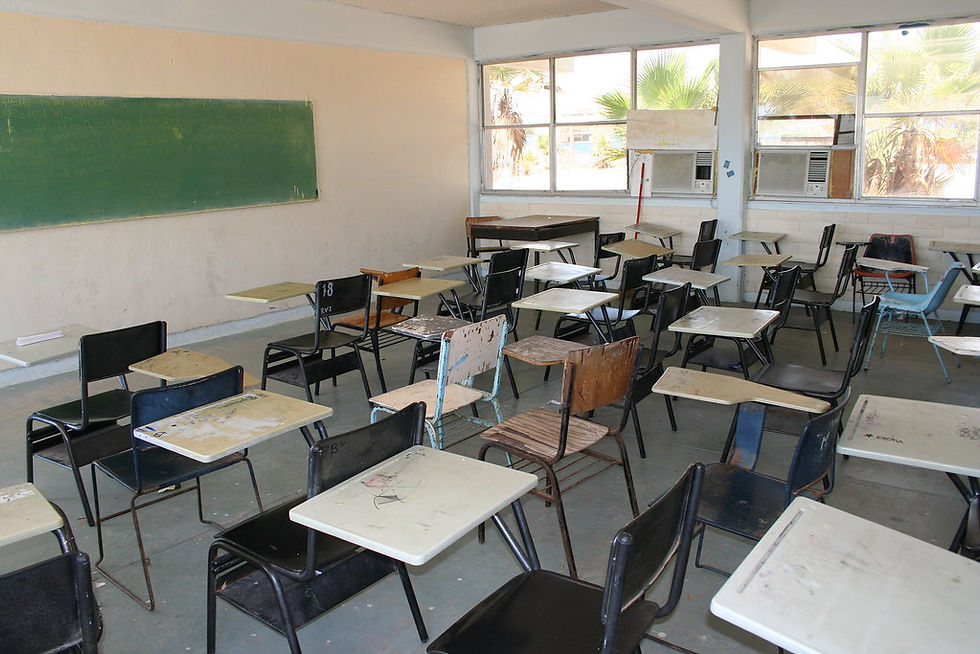Evolution of education
- Apoorva Upadhyay .

- Jun 23, 2022
- 4 min read

Uma Venkataraman is the Head of Department of Social Studies for High School, in Cambridge Public School. She is the Faculty Advisor for MUN for her school and has mentored the students in several Model UN sessions in different schools across India and abroad. Uma has also guided delegations of the school on educational tours to Kennedy Space Centre (NASA), USA. She is the recipient of the Times Award For Innovating Teaching (TAFIT) in 2015 and Bright Spot Award by Pearson Schools in 2016.
Teaching has always been considered a noble profession and teachers have been generally held in high esteem. But the role of a teacher has undergone drastic changes over time, from the exalted position during the Gurukul period, to one of reverence and respect and now to a mere profession. Here, I attempt to trace the evolution of teaching in different phases of history.

During the ancient times, children were sent to a Guru for learning, whether they were from a king’s palace or from a trader’s or a farmer’s household. The children stayed with the Guru and the Gurukul took care of all their needs, including food, education and shelter. The education happened not during fixed hours but throughout the day, the children learnt the values of empathy, honesty, punctuality, discipline and good manners apart from words and numbers. The Gurukul prepared the children to lead a life of simplicity, helping others, forgiving and contentment. The Guru was respected and considered equal to God, so much so, that the students had unquestioning obedience. The apt example of this is Ekalavya, who cut his finger and offered it as fees to his Guru.
Several changes happened in education in the subsequent decades. As the Gurukul system of education petered out, small schools were established at several villages, sometimes one school catering to the needs of a few surrounding villages. The teachers at these schools did not command as much respect as the Gurus of the earlier age, but still maintained strictness and obedience among the students. The subjects taught were mainly language and mathematics with basic knowledge of social sciences.

During the British occupation of India, Lord Macaulay introduced western education in the early 19th century. Convent schools were set up at several towns. There was a tug-of-war between orient education and anglicism. The natives were torn between the roots of ancient Indian society and the western education which was trying to sweep away the moral ethos and beliefs. However, most such changes were conned to the upper strata of society and a new class of urban intelligentsia was created.
There were some positive effects of British education. It became a window to the world and educated Indians gained wide acceptance. Even as western education gained importance, there were conflicts between vernacular and English languages because of there being many first-generation learners.
Even for the teachers, English was a new language and they found it difficult to teach. The government policy of having three languages added to the burden of teachers and students, who had to learn the local language, the national language and English, apart from the other subjects. The teachers were required to constantly update their knowledge.
In the post-independence era, the emphasis of the government on education led to the English education being spread to towns and villages. Mathematics and science gained prominence over humanities during the latter part of 20th century. This resulted in students losing focus on humanities and resorting to rote learning for passing the examination. A number of tuition centers mushroomed during this period along with the advent of parallel colleges. The focus was not on gaining knowledge but on passing the examinations. Most students had scant regard for their teachers and believed that they could pass the examinations easily without paying attention to what the teachers had to say. The result was that the knowledge the students gained was wide but lacked depth. When they had to apply the knowledge in practical situations, they often failed miserably.
The modern age, the current one we are saddled with, is one of technology with widespread use of computers, laptops and tablets. Many schools use electronic boards, PowerPoint presentations and other audio-visual aids. The teachers of the older generation, not being used to using technology, find it difficult to adapt to the changing circumstances. Those teachers who take it in their stride and imbibe such technologies thrive in their institutions.
The future will see technologies such as artificial intelligence and machine learning, which have already made their mark in the business arena, being used in the eld of education too. The day may not be far off when the teaching is customised to the needs of individual students based on their understanding and evaluation of examination answers. The teachers of the future will be required to invest considerable time on a regular basis to keep abreast of the evolving technologies.
The role of the teacher is getting tougher; a teacher is expected to spend considerable time in updating her knowledge and face the challenges of the digital age.
The future of India lies in the hands of the new generation and they, in turn, are moulded by the teachers in the educational institutions. The parents, schools and the society as a whole need to encourage this noble profession in attaining greater heights.
This article originally appeared in the TeacherTribe Magazine October 2020 edition.




